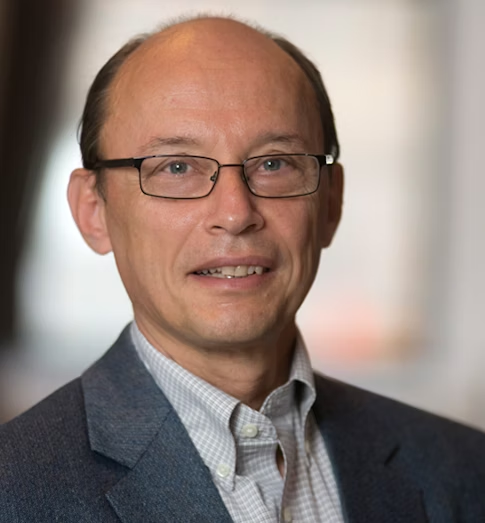Flatiron Institute Launches Center for Computational Mathematics
The Simons Foundation is delighted to announce the launch of the Center for Computational Mathematics (CCM), the fourth computational center launched as part of the foundation’s new Flatiron Institute. The center, led by mathematician Leslie Greengard, will develop new mathematical approaches, algorithms and software to push the boundaries of scientific computing across many disciplines.
“CCM will be a unique mix of novel mathematics and serious software development,” Greengard says. “Right now, people who do those two things don’t have a natural home, but they will at CCM.”
Applied and computational mathematics play a critical role in modern science and engineering, with new opportunities for discovery in virtually every scientific discipline. CCM will collaborate on research projects with the Flatiron Institute’s centers for computational astrophysics (CCA), biology (CCB) and quantum physics (CCQ) and will conduct its own research on problems faced by the broader scientific community. Such projects might include anything from identifying neural firing events in the brain by leveraging signal processing, to formulating algorithms to model the structures of proteins, to developing machine learning techniques to characterize high-dimensional physical, chemical and biological systems.
“Bringing in mathematicians and computer scientists to the Flatiron Institute will benefit the research of the other centers,” says Antoine Georges, director of the Center for Computational Quantum Physics and managing director of the Flatiron Institute. “The computational problems we face will have solutions rooted in mathematics.”

A great deal of thought went into deciding the Flatiron Institute’s final center, says Jim Simons, chair of the Simons Foundation. Workshops were held on several possible topics, such as computational earth sciences and computational neuroscience, but “none seemed quite right,” he says. “When the directors of the other three units came up with computational mathematics, I was dubious at first but was gradually persuaded that such a unit would act like glue, holding the whole institute together, inspiring collaboration among the other units while creating original science itself. I was convinced, and Leslie’s willingness to move from CCB to head CCM sealed the deal.”
Greengard holds the title of Silver Professor of Mathematics and Computer Science at NYU and previously founded and directed the Flatiron Institute’s Center for Computational Biology. Together with Vladimir Rokhlin, he invented the fast multipole method, a mathematical technique that accelerates the calculation of long-range forces in the n-body problem. The Institute of Electrical and Electronics Engineers named the method one of its top 10 algorithms of the 20th century.
Since its creation, the fast multipole method has accelerated the work of computational scientists. Greengard says that one of the goals of CCM is to create tools that similarly enable researchers to tackle ever-bigger and more complex questions. “I’m a tool builder by trade, and I think of CCM as a hub for tool building,” he says. “We’ll develop new algorithmic approaches and new mathematical formalisms that provide new ways of attacking scientific problems.”
Applied mathematician Stéphane Mallat of Collège de France and École Normale Supérieure in Paris will join CCM as distinguished research scientist. Mallat will spend part of the year at the Flatiron Institute conducting research and helping shape the scientific agenda of CCM. At full capacity, CCM will house around 50 scientists, mathematicians and programmers.
“The Simons Foundation is delighted to introduce the Center for Computational Mathematics as the fourth Flatiron computational center,” says foundation president Marilyn Simons. “Mathematics is central to our foundation’s work and will be a powerful tool for advancing computational methods and research.”


